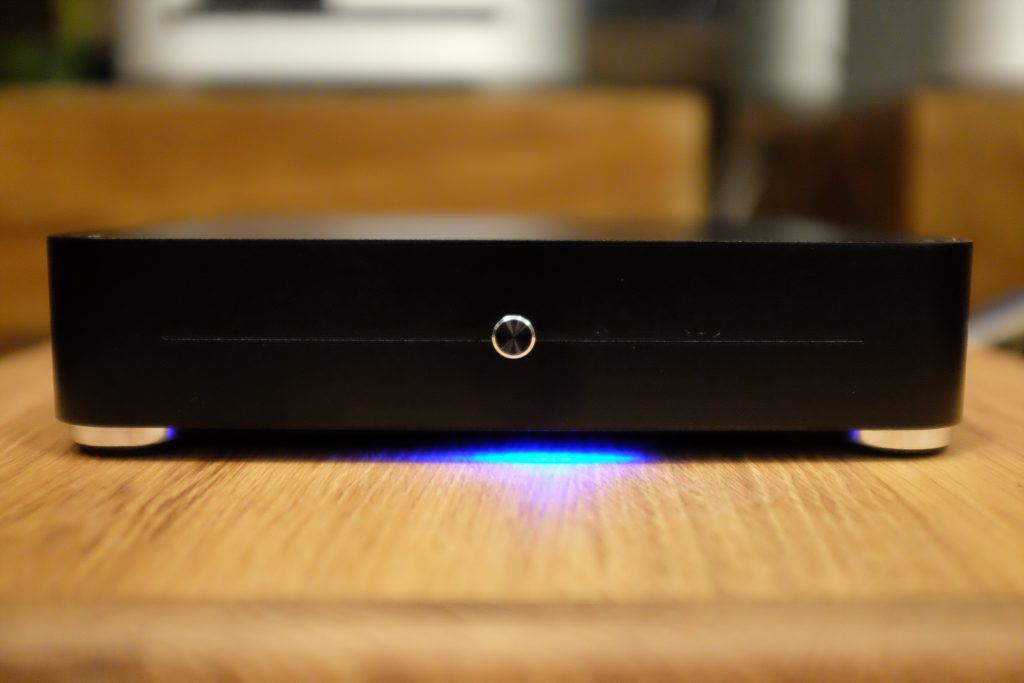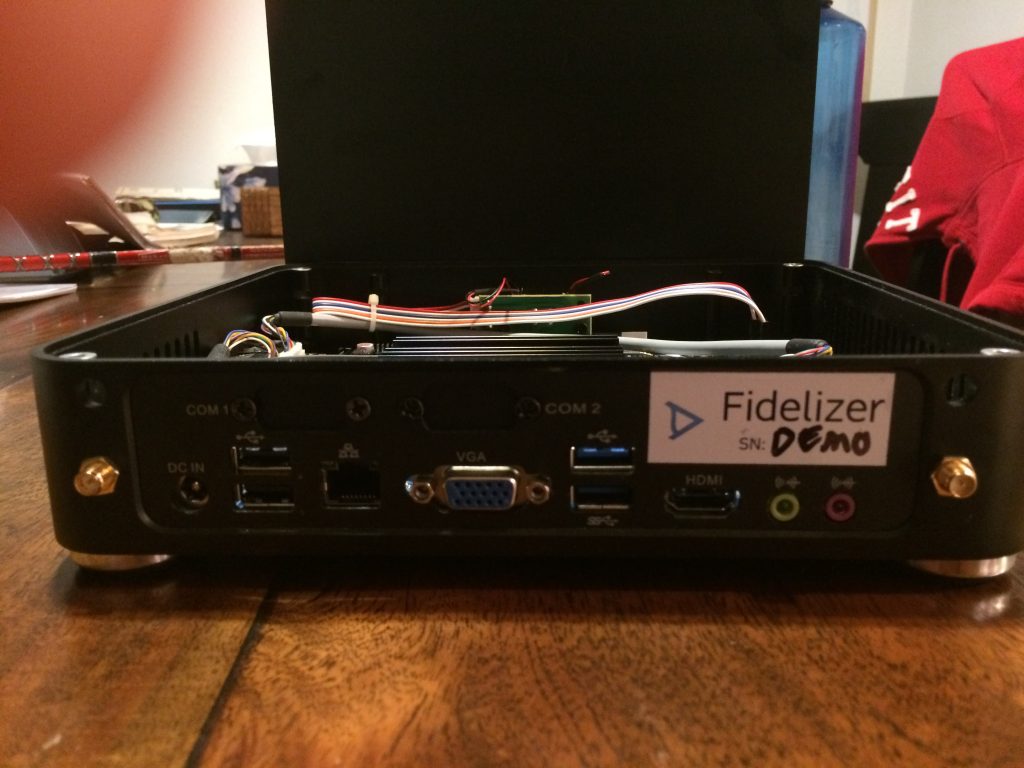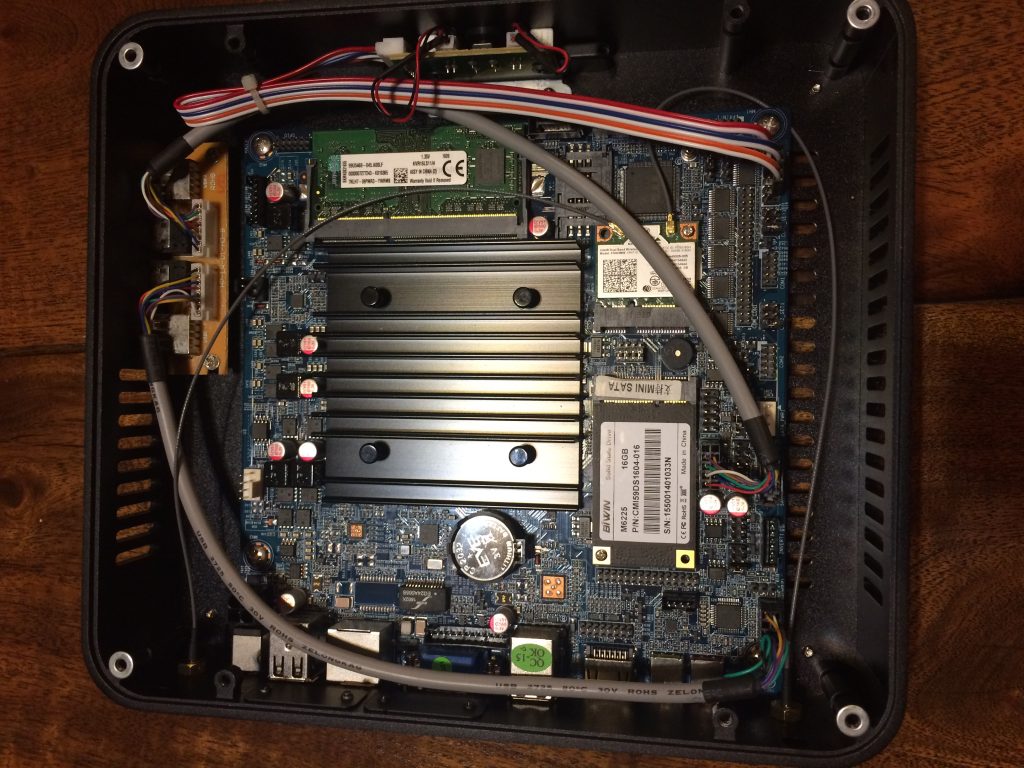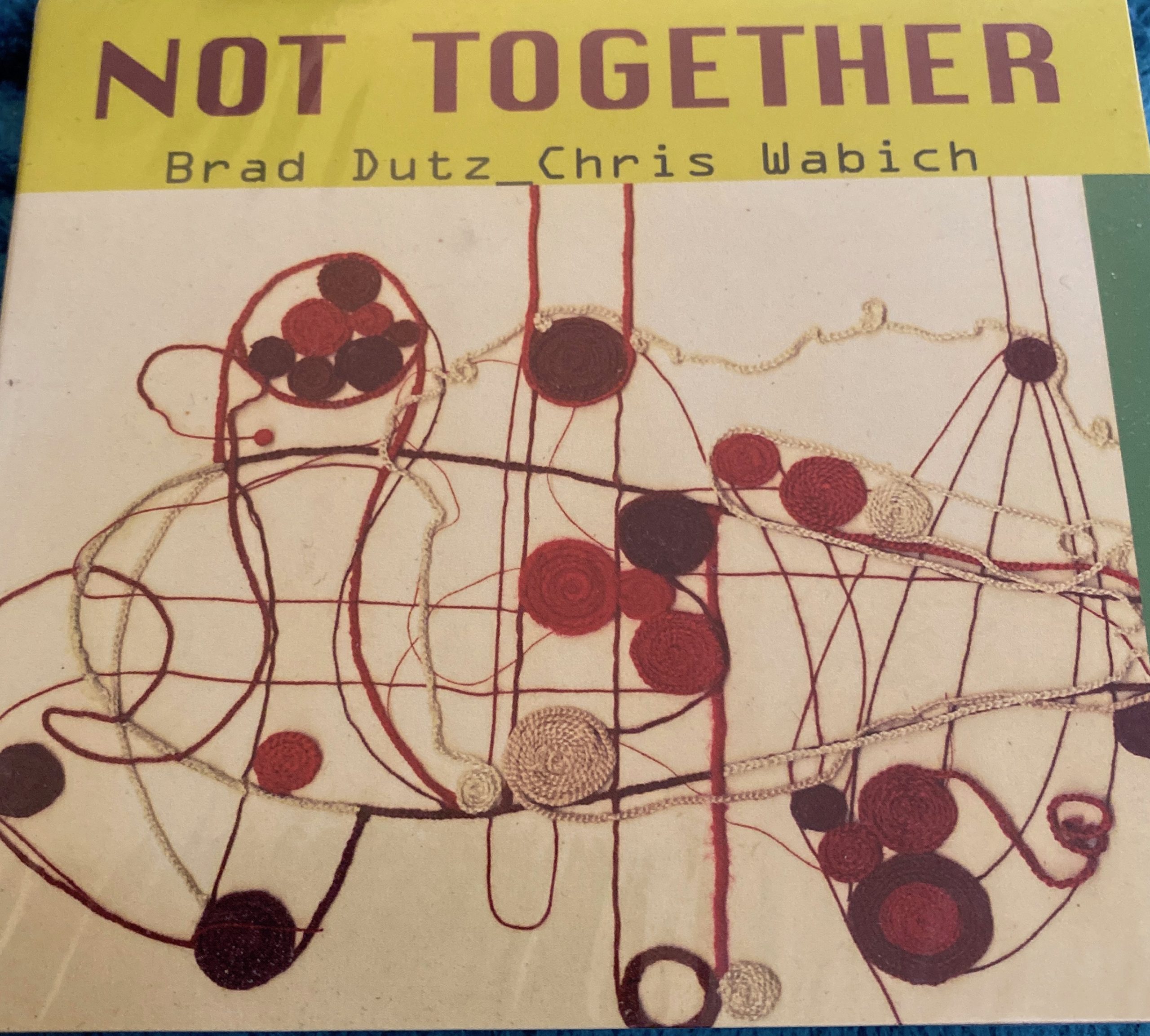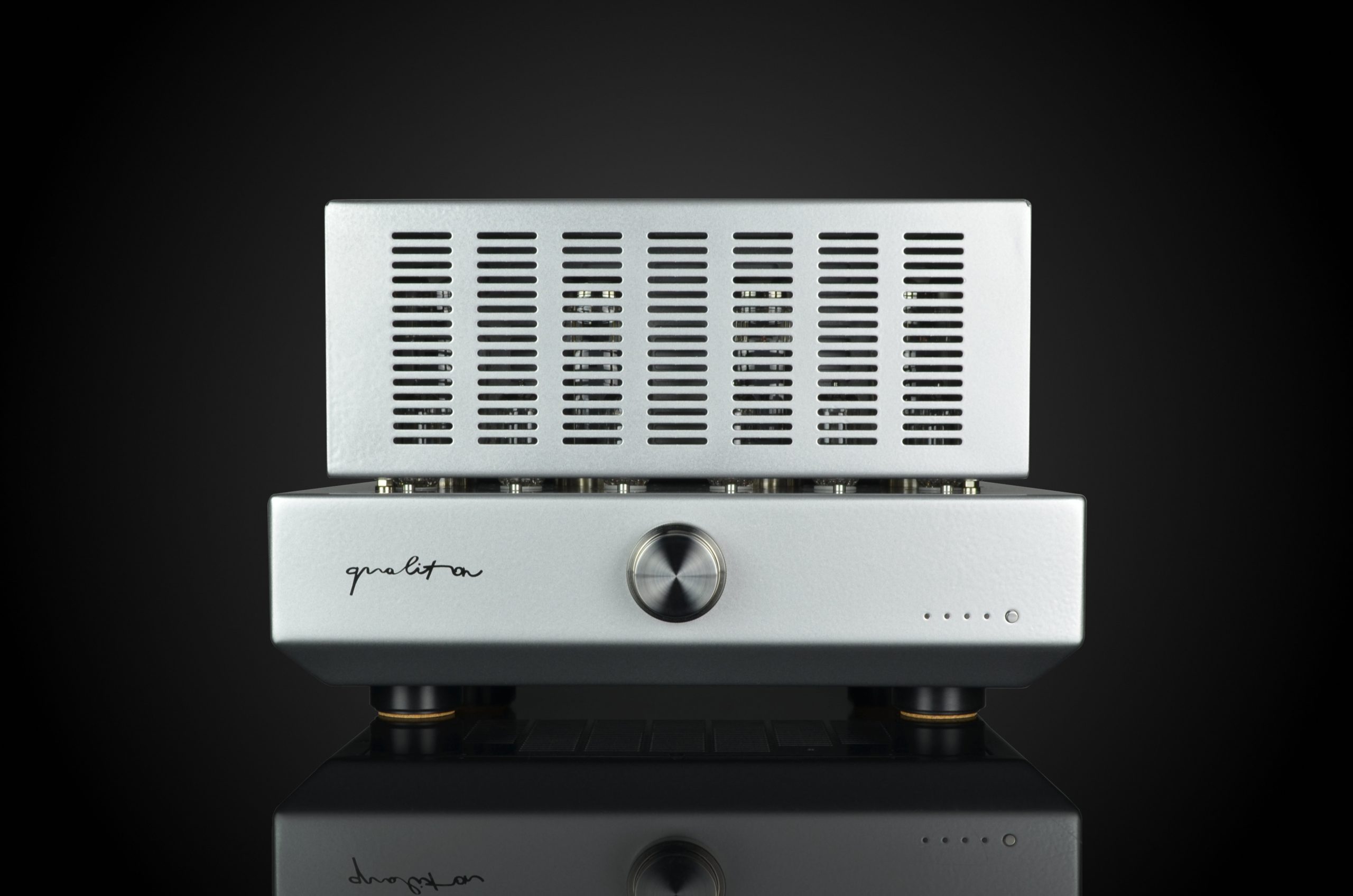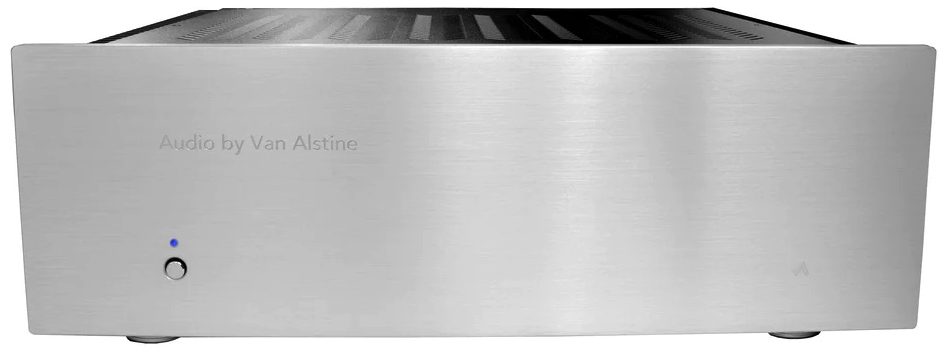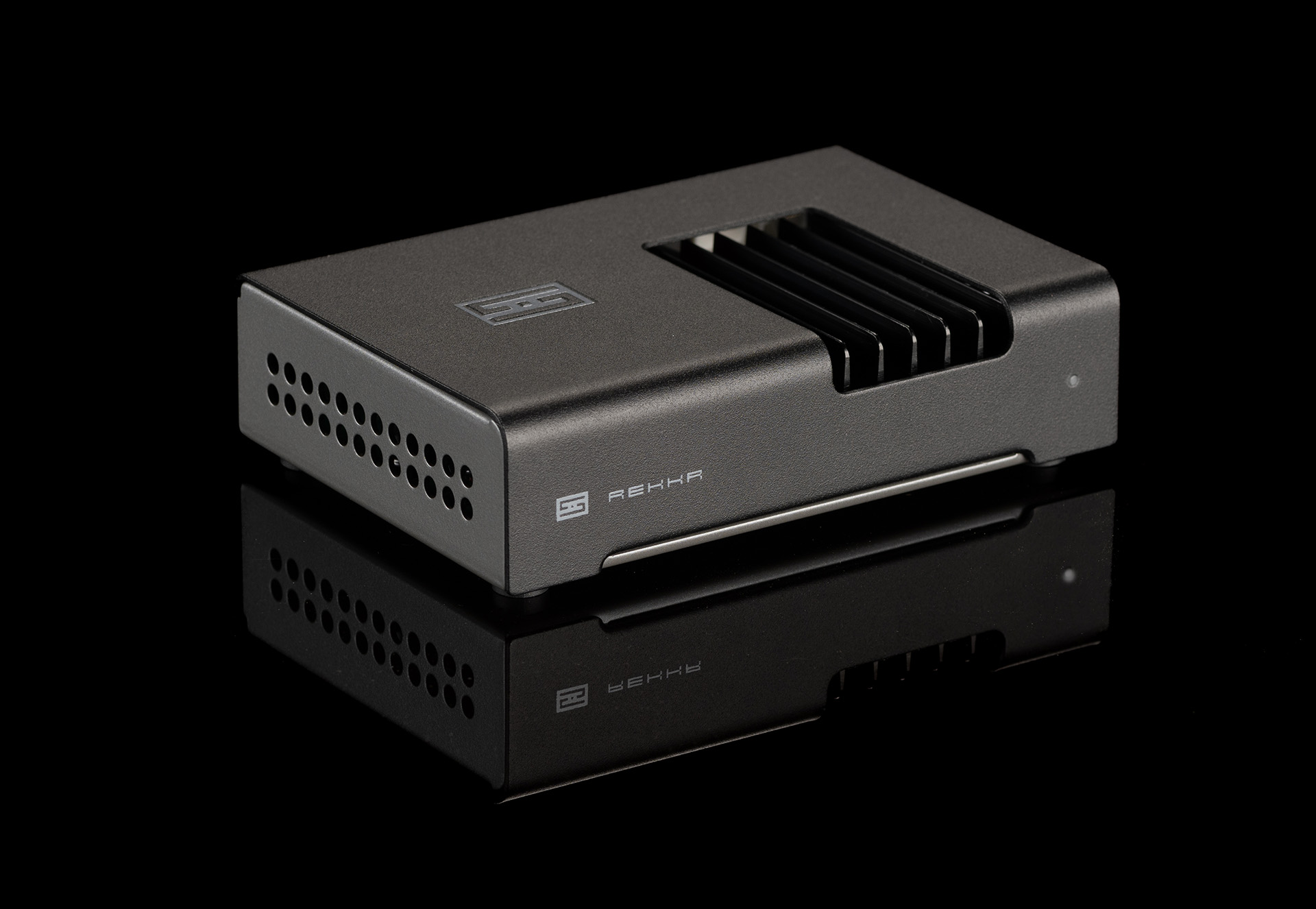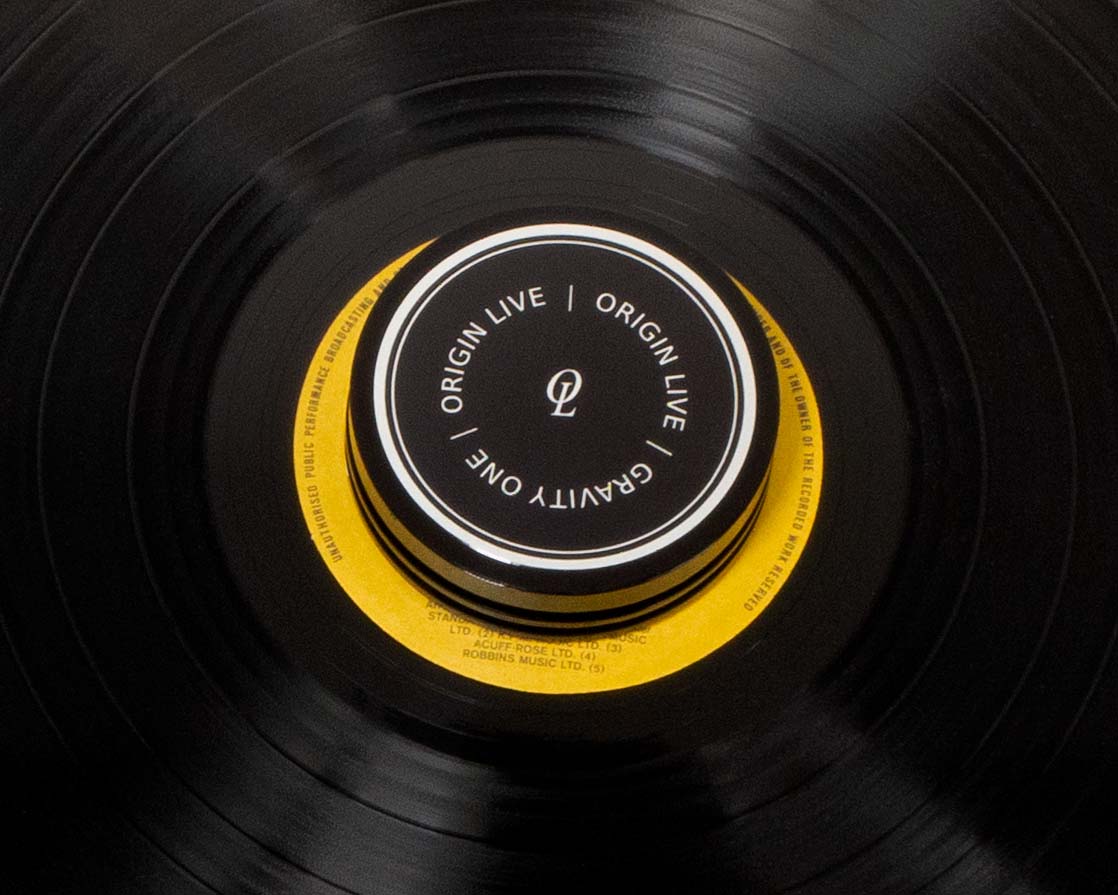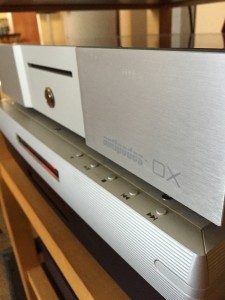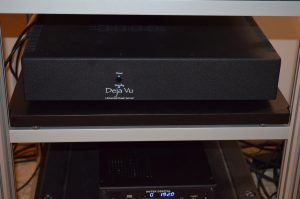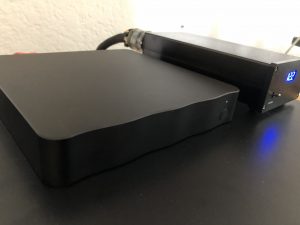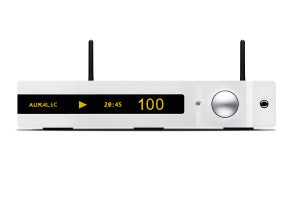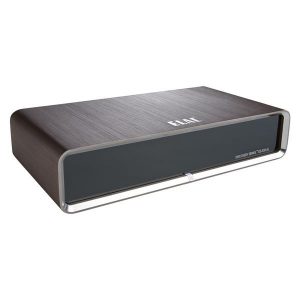Fidelizer Nimitra
About two months into my first job—bagging groceries—I had a recurring nightmare. Mid-conversation I would discover I was sitting cross-legged on the counter next to the register wearing only my boxer shorts. Writing about computer audio makes me feel, well, let me say my nightmares involve fewer clothes these days.
As foreshadowing for this story, the discomfort I'm experiencing writing about computer audio is a function of my ignorance about working with the operating system, the network, or the permissions required to allow successful integration of a computer into my stereo. Although I'm still in my 50s, I fear I'm becoming a lame, old fogey. Swapping cables or a preamp is fine, but integrating computers often seems to require knowledge of seemingly unrelated technical skill to get my system working. I am, however, unwilling, and really not able, to find my way down the dark alleys of computers to get file based systems working "properly."
With a DSD only DAC, I'm committed to computer audio—I cannot play music without transcoding the 99% of my music collection stored as PCM into the format my DAC plays. So, a computer is mandatory for me. Rather than sharing the adventures of combing the back streets of distant computer worlds—unlike Frodo I will not be coaxed off my doorstep. I agreed to write about the Nimitra because, Keetakawee Punpeng claims he's produced the "ultimate turnkey streaming audio solutions (sic)." I took "programming" Pascal in college, as well as some other programming of mini, rather than micro/desktop computers, but all of that is decades ago and even further from any current recall. I was willing to struggle back then... not so much now.
I am inclined to trust the Nimitra to be what it says it is because of the happy experience I had using Fidelizer on my Windows 10 machine. Fidelizer made an easily noticed difference for the better with essentially no understanding required. Fidelizer made my file playback audibly quieter, resulting in a sound that was more composed, relaxed and revealed performer's intentions better.
So, what is the Nimitra? It is an optimized computer audio server based on Windows 10 designed to handle music streaming in your stereo system with high-end sound quality. It apparently has even more processes curtailed than in a Fidelizer implementation. Calling it a server might misdirect you from what it can do.
From the Fidelizer website:
- Nimitra can work as a music server by connecting USB storage and USB DAC, join the device with your network, and browse for your music collection using Linn Kazoo or any uPNP application of your choice;
- Nimitra can act as a library server in place of NAS by connecting USB storage, join the device with your network, and stream audio to network players. It also supports DSD streaming and Internet Radio too; Or
- Nimitra can transform any conventional USB DAC into Network Player by connecting USB DAC, join the device with your network, and stream audio to Nimitra as Roon ready and HQPlayer NAA device.
The Nimitra is a relatively small, unassuming box that has a button in the middle of the front with a blue light shining underneath, in a sort of reverse homage to Batman. The hardware has been selected for lower vibrations and special efforts were made to damp vibrations.
Following are some of the specs of the Nimitra—note I will not be commenting on the efficacy or lack thereof as... I have no idea. The finished hardware design has the following specifications:
- Fanless machine – No fan, no vibration from fan and no noise pollution in listening room. mPCIe SSD for OS storage. No moving part, no vibration and no data/power cable for signal degrading.
- Intel Celeron J1900 2.0GHz CPU – Quad core, low power consumption but powerful enough with 2MB L2 Cache.
- Kingston DDR3L 4GB Memory – It's a hard decision between lower CL with DDR3 or lower voltage with DDR3L but lower voltage is better.
- Direct 12VDC input power supply – Feeding power directly to the board reduces noise and pollution inside.
- 3.5mm aluminium alloy frame – It also comes with only 3 pieces having less frequency shift with audio-grade isolating feet.
- Built-in WiFi/Bluetooth – You can setup WiFi and Bluetooth speakers to use with music server platform.
Mr. Punpeng says the Nimitra is the result of his trial and error to create the ultimate turnkey streaming audio solution. The Nimitra incorporates Fidelizer software I use on my Windows 10 machine, and which has rightfully garnered praise around the internet, plus additional optimizations for dedicated audio server.
For me and my unwillingness to stumble down dark digital alleys, cross metaphorical computer bridges to unknown places, or otherwise be waylaid by computer stuff, the Nimitra's promises were compelling. The Nimitra is produced in Thailand and sold online—with no US dealers, but Keetakawee indicates he has dealers in Italy, Hong Kong, and England. You might rightly be concerned about handling the hardware or software issues that might arise and wonder how Keetakawee is going to help get your computer to work. Try the Geek Squad? Not likely. With some embarrassment, I became your guinea pig to discover how easy the Nimitra was to use.
I received it following another reviewer's time with it. Naturally, of course, that reviewer is computer literate and configured it for his needs. Not being computer literate... I was not able to set the Nimitra up and thus... had no sound. It sat on my desk for a couple of hours while I tinkered with settings on my computer trying to figure out how to access the Nimitra. To no avail—this is why I generally don't review computer audio, I simply lack the literacy. So, I contacted Keetakawee through Facebook. I've been swamped and it took me longer to be available than Keetakawee. Within a few minutes—maybe twenty—the Nimitra was configured and ready.
The Nimitra comes with 30 days of technical support, but you're not likely to need them except perhaps as I did at the outset. If you're able to reconfigure another computer, you'll be able to do so with the Nimitra, too. So, back to me, Keetakawee accessed the Nimitra using remote viewing software called TeamViewer to see the Nimitra's setup and to make changes. Initially, Punpeng set up the Nimtra with Foobar2000 to transcode PCM to DSD—transcode means to convert one form of coded representation (PCM) to another (DSD). I used those settings for about a month. Foobar2000 worked well and is free. The sound, like my own "Fidelized" computer, was also composed and even "orderly." Unable to tweak settings, due to my inability rather than Foobar2000's, the sound still left me satisfied if not thrilled.
Perhaps other settings would have made me think differently of Foobar2000, but I had no objections and respected the sound I was hearing. The overall impression was that the Nimitra was neutral and clean, much as my ATC speakers are. Tone and timbre weren't necessarily "dense" or rich in sound, but they were definitely not thin, bleached, or lean. Instrumental sounds were clear, realistic sounding reproductions and completely acceptable. The presentation was quite good. If I found fault with the Nimitra in this iteration, I would lay equal responsibility with my speakers. My speakers need to be fed color or they can sound simply neutral. Neutral isn't bad, but it isn't gorgeous, either.
At this time, I tried Keetakawee's Nikola linear power supply ($495) hoping for more. I didn't notice a difference in the presentation. No harm, no foul, but also no "extra" color, which as a designer is exactly the performance you'd want, but not necessarily what you might want wearing the hat of "listener." But this lies at the feet of my system. I should say, someone with a modicum of computer skills would have no problem accessing Foobar2000, but this guinea pig wasn't so equipped.
At this stage I enjoyed accessing my digital collection located in another room using the iOS App "Mconnect" to control songs, playlists, or to choose performers. I could recommend the Nimitra at this point as a competent performer, but I'd be more enthusiastic about it with a system that is already "colorful" though I hasten to add, I'm not sure how long I could live with an already colored sound.
At my request Keetakawee helped me connect HQPlayer with the Nimitra. This, apparently, required that he load or make JPlay available in HQPlayer (on my computer). JPlay allowed me to play with a multitude of settings in HQplayer and that allowed me to explore the performance of the Nimitra more.
With HQPlayer feeding the Nimitra, sans Nikola, the sound had more color and nuance than with Foobar2000. Foobar2000's presentation was a little stiff and lacking in emotion, but again, I will point at my system as a co-conspirator. In any event, in my system I preferred a customized HQPlayer, in my system, to an uncustomized Foobar2000. Music was more relaxed and lively, meaning music was simply more natural sounding.
In my normal computer audio configuration, with the signal straight from my computer to an NAA, swapping settings in HQPlayer made some differences in the presentation, but the specific changes to sound weren't readily obvious, even if detectable. With HQPlayer sending signals to the Nimitra filter changes were much easier to detect. While I dabbled with various filter settings I ended up enjoying ASDM7 and "closed form fast" settings the most. With this iteration, the sound was slightly fuller and more relaxed sounding. I did not notice a loss in bass drive or extension. Treble remained as extended as through Foobar2000 while the midrange gained a welcome bit of nuance. In my system, this iteration was distinctly preferable to the Foobar2000 iteration. Without more, I could happily live with the performance here; perhaps not ecstatically given my system's predilections.
In the interest of being thorough rather than hopeful, I reinserted the Nikola linear power supply. Ohhhhh, wow, this time the Nikola was a welcome and noticeable addition. The most obvious changes were in the lower midrange, imparting a welcome bit of warmth and emotional content. There were more musical interludes that occurred as beautiful. This was clearly better than previous iterations. Keep in mind that this review, as with probably every other review, accentuates differences to make a point. The sound was very nice without the Nikola, but the Nikola added a dollop of more that was desirable. And yet, there was room for more.
I opened up the Nimitra to expose the circuit boards and placed two Bybee iQSE's on top of these. The iQSE are said to create a slipstream for electrons and protons in circuit boards—however unlikely that sounds (Google Spintronics and spend an hour or two reading before you dismiss this technology) there was yet another level of performance. I thought the difference was rather markedly better, so I asked my wife to come give a listen. Annoyed to be disturbed from her recreational reading, she agreed to take one for the team. It turned out to be a pleasure for her. She found herself in tears listening to Eva Cassidy's "Fields of Gold." I, too, found the Nimitra's presentation quite moving.
Keetakawee Punpeng of Fidelizer has put together a fine machine. The Nimitra is transparent in the ways that are good—letting the signal through seemingly unmolested, without being transparent in ways that are not good—lean, bleached or neutered. I think Punpeng has largely achieved his goal of a turnkey operation. Keetakawee provides the service you're likely to need, does it quickly and so deftly removed most of my concerns about buying a computer from someone in another country. While improvements can be wrought in the performance of the Nimitra through software and the Nikola power supply, it sounds very nice without it. Fiddling with the settings in HQPlayer, adding the Nimitra and even the iQSE's plumps the Nimitra to a seductive performer that worked for my mind and heart. That it also sounds marvelous and can be controlled by a phone or tablet adds to my delight. Recommended. This is one of the least expensive ways to get into excellent computer audio.
Fidelizer Nimitra
Retail: US$1395
Fidelizer Nikola Linear Power Supply
Retail: US$495
Nimitra and Nikola purchased together
Retail: US$1840 ($50 discount for dual purchase)
Fidelizer
All pictures provided by Fidelizer-audio.com or Larry Cox




